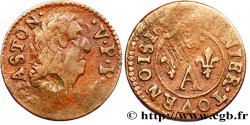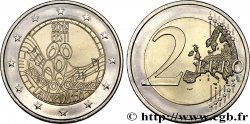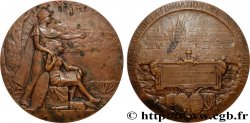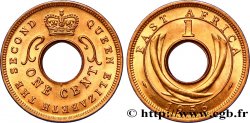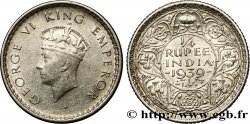fjt_013585 - PRINCES DU SANG ROYAL DE FRANCE - ROUYER - IV. Jean de France duc de Berry n.d.
недоступный.
Товар уже продан в нашем интернет-магазине (2012)
Цена: : 480.00 €
Товар уже продан в нашем интернет-магазине (2012)
Цена: : 480.00 €
Тип Jean de France duc de Berry
Дата: n.d.
Металл: brass
Диаметр: 25,5 mm
Ориентация осей монеты: 11 h.
Век: lisse
Редкость: R2
Лицевая сторона
Аверс: описание: Armes de Jean de France duc de Berry accostées en bas de feuillage.
Обратная сторона
Реверс: легенда: SIT NOMEN DOMINI BENEDICTV.
Реверс: Описание: Croix fleurdelisée.
Реверс: перевод: Béni soit le nom du Seigneur.
Комментарий
Le personnage est immensément célèbre du fait de son livre d’heures “Les très riches heures du Duc de Berry” comme elles sont le plus souvent appelées.
Jean Ier de Berry, dit Jean le Magnifique, (30 novembre 1340 à Vincennes - 15 juin 1416 à Paris) est le troisième fils du roi de France, Jean II dit le Bon et de Bonne de Luxembourg.
Il est apanagé du Berry (1360-1416) par son père, puis du Poitou en 1369 par son frère Charles V, des comtés d'Auvergne et de Boulogne, par spoliation de Jean II d'Auvergne, son futur-beau-père, le 6 novembre 1387, et du comté de Montpensier de 1404 à 1416.
Après la défaite désastreuse de Poitiers, où son père est fait prisonnier, il est donné en otage aux Anglais lorsque le roi revient en France (1360) et il reste prisonnier en Angleterre jusqu'en 1367.
Depuis le début de la reconquête, des frères du roi c'est en premier lieu Louis d'Anjou qui est en première ligne pour les opérations militaires, puis Jean de Berry et le cousin Louis de Bourbon. Philippe a un rôle plus effacé. Cependant il prend part directement aux opérations de reconquête du Poitou. En effet cette région est liée par des intérêts économiques à l'Angleterre où elle exporte son sel. Les barons poitevins ont massivement choisi le parti anglais et il faut une campagne militaire lourde pour la faire revenir possession Française.
La suite de sa biographie et de nombreuses illustrations à http://fr.wikipedia.org/wiki/Jean_Ier_de_Berry.
The character is immensely famous because of his book of hours “The very rich hours of the Duke of Berry” as they are most often called.
John I of Berry, known as John the Magnificent, (November 30, 1340 in Vincennes - June 15, 1416 in Paris) was the third son of the King of France, John II, known as the Good, and Bonne of Luxembourg..
He was granted Berry (1360-1416) by his father, then Poitou in 1369 by his brother Charles V, the counties of Auvergne and Boulogne, by spoliation of Jean II of Auvergne, his future father-in-law, on November 6, 1387, and the county of Montpensier from 1404 to 1416..
After the disastrous defeat at Poitiers, where his father was taken prisoner, he was given as a hostage to the English when the king returned to France (1360) and he remained a prisoner in England until 1367..
Since the beginning of the reconquest, the king's brothers were first and foremost Louis of Anjou who was on the front line for military operations, then Jean de Berry and his cousin Louis de Bourbon.. Philippe has a more discreet role. However, he took part directly in the operations to reconquer Poitou.. In fact, this region is linked by economic interests to England, where it exports its salt.. The Poitevin barons have overwhelmingly chosen the English side and a heavy military campaign is needed to bring it back into French possession..
The rest of his biography and numerous illustrations at http://fr. Wikipedia. org/wiki/Jean_Ier_de_Berry
Jean Ier de Berry, dit Jean le Magnifique, (30 novembre 1340 à Vincennes - 15 juin 1416 à Paris) est le troisième fils du roi de France, Jean II dit le Bon et de Bonne de Luxembourg.
Il est apanagé du Berry (1360-1416) par son père, puis du Poitou en 1369 par son frère Charles V, des comtés d'Auvergne et de Boulogne, par spoliation de Jean II d'Auvergne, son futur-beau-père, le 6 novembre 1387, et du comté de Montpensier de 1404 à 1416.
Après la défaite désastreuse de Poitiers, où son père est fait prisonnier, il est donné en otage aux Anglais lorsque le roi revient en France (1360) et il reste prisonnier en Angleterre jusqu'en 1367.
Depuis le début de la reconquête, des frères du roi c'est en premier lieu Louis d'Anjou qui est en première ligne pour les opérations militaires, puis Jean de Berry et le cousin Louis de Bourbon. Philippe a un rôle plus effacé. Cependant il prend part directement aux opérations de reconquête du Poitou. En effet cette région est liée par des intérêts économiques à l'Angleterre où elle exporte son sel. Les barons poitevins ont massivement choisi le parti anglais et il faut une campagne militaire lourde pour la faire revenir possession Française.
La suite de sa biographie et de nombreuses illustrations à http://fr.wikipedia.org/wiki/Jean_Ier_de_Berry.
The character is immensely famous because of his book of hours “The very rich hours of the Duke of Berry” as they are most often called.
John I of Berry, known as John the Magnificent, (November 30, 1340 in Vincennes - June 15, 1416 in Paris) was the third son of the King of France, John II, known as the Good, and Bonne of Luxembourg..
He was granted Berry (1360-1416) by his father, then Poitou in 1369 by his brother Charles V, the counties of Auvergne and Boulogne, by spoliation of Jean II of Auvergne, his future father-in-law, on November 6, 1387, and the county of Montpensier from 1404 to 1416..
After the disastrous defeat at Poitiers, where his father was taken prisoner, he was given as a hostage to the English when the king returned to France (1360) and he remained a prisoner in England until 1367..
Since the beginning of the reconquest, the king's brothers were first and foremost Louis of Anjou who was on the front line for military operations, then Jean de Berry and his cousin Louis de Bourbon.. Philippe has a more discreet role. However, he took part directly in the operations to reconquer Poitou.. In fact, this region is linked by economic interests to England, where it exports its salt.. The Poitevin barons have overwhelmingly chosen the English side and a heavy military campaign is needed to bring it back into French possession..
The rest of his biography and numerous illustrations at http://fr. Wikipedia. org/wiki/Jean_Ier_de_Berry








 Cообщить об ошибке
Cообщить об ошибке Распечатать страницу
Распечатать страницу Отправить мой выбор
Отправить мой выбор Задать вопрос
Задать вопрос Consign / sell
Consign / sell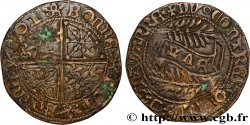
 Информация
Информация